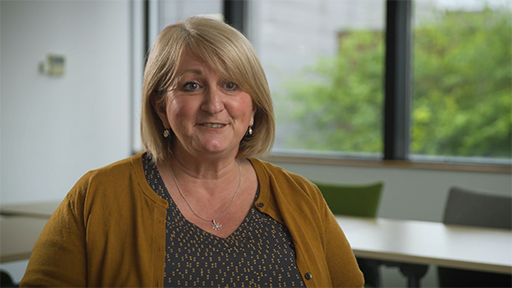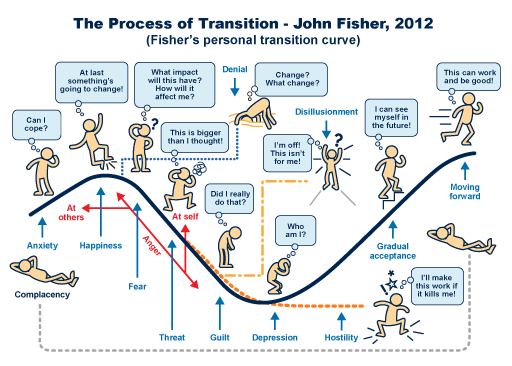1 The need for change
During his Day of Affirmation Address at the University of Cape Town in 1966, Robert F Kennedy said:
There is a Chinese curse which says, ‘May he live in interesting times.’ Like it or not, we live in interesting times. They are times of danger and uncertainty; but they are also the most creative of any time in the history of mankind.
This speech took place decades ago, but it seems that in every decade since, something of note has made that decade ‘interesting’ – whether it be man setting foot on the moon, birth control pills, DNA sequencing, the Internet, fibre optics, mobile phones, GPS, online shopping, social media, or services on demand like Uber. And, of course, COVID-19 kicked off the 2020s in the most ‘interesting’ way: it changed how we live and work and saw the acceleration of digital transformation but also brought a focus on wellbeing, inclusion, and the digital divide.
In video below, contributors share their experiences of adapting ways of working during the COVID-19 pandemic in 2020 and how they managed the changes required.

Transcript: Video 1 Operating during COVID-19
Responding to COVID-19 also showed what was possible and led to amazing rapid innovation and change implementation, such as vaccines being developed and pushed through human trials for approval for medical use, and the delivery of an unprecedented vaccination programme in the modern day in months rather than years. This was achieved by global collaboration between pharmaceutical companies, universities and governments to shorten the timeline between creativity, invention, innovation and the rollout of massive change, all under the unforgiving scrutiny of the media and the public.
In the post COVID-19 era, in a continued period of uncertainty, including economic uncertainty and cost of living challenges, people’s expectations, buying habits, trust and behaviour remain in flux. As a result, organisations, governments, public bodies, healthcare systems and even charities need to innovate new products, services and processes to compete. To do so means that invariably they need to undergo almost continuous change.
This need for change can come about, as Senior et al. (2020) point out, from any source and influence, be it socio-cultural, political-legal, technological or economic. To respond to that need can often mean that disciplines from across the entire organisation or wider ‘system’ have to work together.
Change often involves changing ways of working, policies, processes and procedures and adopting or developing new technology as well as delivering new products and services.
Change is not always easy, and the most important consideration for change is that it involves people who have different needs, expectations and comfort levels with change. For those leading change, being empathic and understanding about resistance to change is a skill that needs to be developed, alongside resilience, as people tend to go through a range of emotions at different stages of the change ‘journey’, as depicted in John Fisher’s (2012) Personal Transition Curve, shown in Figure 2.
At times, feedback can feel like a personal criticism of you and the change you are trying to make. Those leading change require not only the ability to listen and take criticism as constructive feedback from which to evaluate and learn but also the confidence to make informed decisions and be honest about what is possible.
Activity 1 How do you feel about change?
Look at Fisher’s personal transition curve, and reflect on the following:
- How did you cope with the different COVID-19 ‘lockdowns’ during 2020 and 2021?
- Think about a recent unexpected change you have had to deal with; how did you cope with it?
Comment
The chances are that the lockdown periods in 2020–2021 seem a distant memory. You may have specific recollections, but no matter how challenging that time may have been for you, you adapted and dealt with the continual uncertainty and change. There may be learning you took from those lockdowns. For many it offered an unexpected opportunity not only to re-evaluate what was important but also how resilient you can be.
My overwhelming memories are how rapidly I had to adapt and change, not least to cope with home schooling and work but also having to shield. I had to plan, adapt and change. While these were comparatively small-scale ‘change projects’, it involved scoping, planning, implementation (with a lot of resistance from my children!) and delivery, in order to adapt to living in lockdown whilst also looking after my children, working and managing my own wellbeing. Some days were really mentally challenging.
If you are dealing with or have recently dealt with change, your feelings may be much stronger. Even though I am used to dealing with continual change due to the nature of my work, I can identify with nearly all the stages, and I know I have a loop of anxiety (is this the right approach?), guilt (did I just say that?) to moving forward (we can do this). However, I learn from these feelings and talk to others to get different perspectives, ideas and support.
We know that change can be inevitable. We know that change can be difficult. A first step towards dealing with change is to clarify what exactly it is that needs to change and why. We look at this in the next section.

